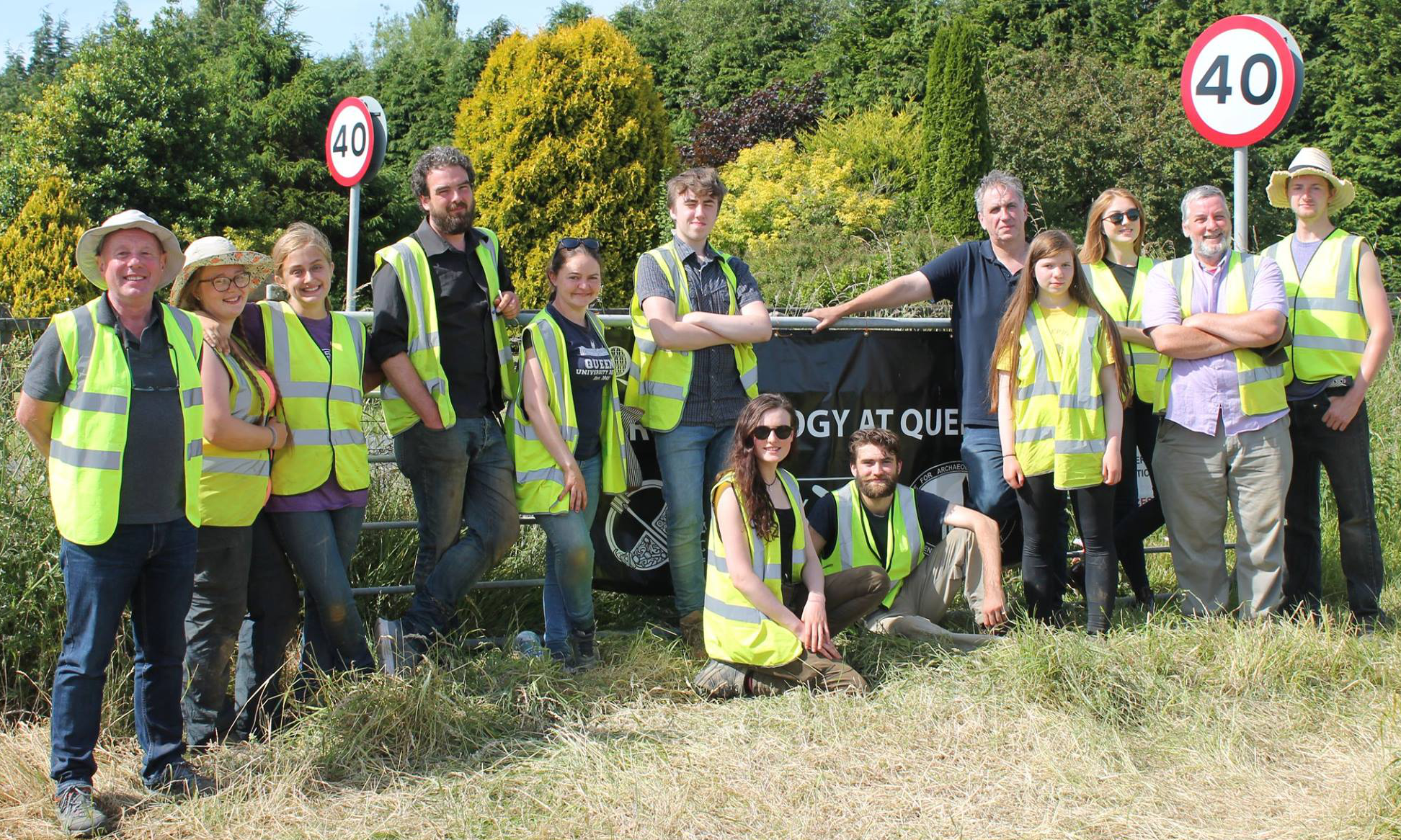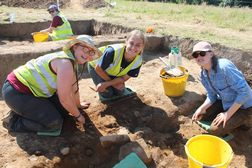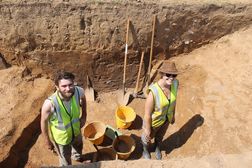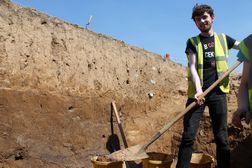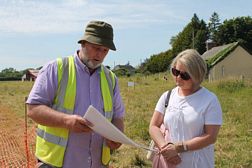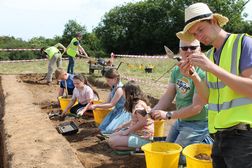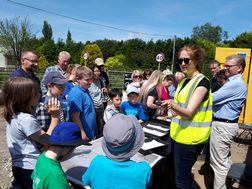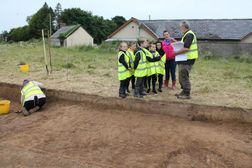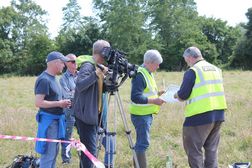Brocagh
In June 2018 Archaeology and Palaeoecology, Queen’s University Belfast, carried out its annual student training excavation at the site of a late-Elizabethan earthen fortification known as ‘Mountjoy Fort’ at Brocagh, County Tyrone. The site lies in the townland of Magheralamfield, on the south-western shores of Lough Neagh and 4.5 miles (7 km) east of Coalisland. There are no above-ground visible remains of the monument and the location of the excavation trench was based on a geophysical survey carried out by Dr Siobhán McDermott of the Centre for Archaeological Fieldwork (CAF) at QUB in April-May 2017 and the map of the fort drawn by Elizabethan campaign cartographer Richard Bartlett in 1602. The community-based excavation was directed by the CAF’s Ruairí Ó Baoill and was carried out on behalf of the Lough Neagh Landscape Partnership, funded by the Heritage Lottery Fund.
Mountjoy Fort was constructed by English forces in summer 1602 during the final years of the Nine Years War (1593-1603) between the forces of Queen Elizabeth I and the confederation of Gaelic Irish lords led by Hugh O’ Neill, earl of Tyrone. The fort took the form, as illustrated by Bartlett, of a seven-sided fortified bawn, protecting an inner citadel located on the edge of the lough. Within the fortification there are also a number of other linked but separate smaller annexes. The layout of the fort appears to cover quite a large area. It straddles the modern Mountjoy Road (B161) and the road that leads up to the extant stone and brick-built fortified house known as Mountjoy Castle constructed several years after the earthen campaign fort.
One of the internal defensive ditches within the fort was uncovered along with and it’s accompanying earthen bank. Within the excavated trench the ditch had a recorded maximum width of 6m wide and was 1.5m deep. A small portion of the truncated remains of a red brick building within the fort was also uncovered during the excavation.
Finds associated with the Elizabethan fort included 17th century pottery, animal bone, clay tobacco pipe stems, red brick and glass. A particularly nice find was a fragment of an elaborate stem of a wine glass and the quality suggests that it would have been the property of one of the officers- a common soldier could not have afforded such a beautiful object. A number of interesting military artefacts were also uncovered, including lead pistol and caliver shot. Calivers were a type of light musket which were used by the English army from the early 1600s when Lord Mountjoy revamped the English army in Ireland at the end of the Nine Years War. Exactly the same date as our lost fort!
A number of prehistoric and Medieval artefacts were also recovered from the excavation. The prehistoric finds included struck flint tools such as an incomplete late-Mesolithic Bann flake, a projectile head, a planno-convex knife and an awl. These finds are a testament to the importance of the resources to be found in Lough Neagh to people living in this part of Tyrone from the time of the first colonists in Ireland onwards. The incomplete nature of many of the flint artefacts suggests that there may have been prehistoric settlements in the area during the late Mesolithic and Neolithic periods. Finds relating to life in late-Medieval Tyrone includes sherds of decorated Medieval Ulster Coarseware, a type of unglazed Irish pottery dating from the 14th-early 17th centuries, and a sherd of 16th-17th century German Stoneware tankard. This type of high-status pottery was being imported into the Gaelic Ulster during the late-Medieval period and sherds were found at Hugh O' Neill's castle at nearby Dungannon during the QUB/HED/ Time Team excavation carried out there in 2007.
The 2018 excavation was a great success. The investigation proved that there are significant in situ remains of Mountjoy Fort surviving below the fields at Brocagh.
The excavation at Brocagh was the 18th community-based archaeological excavation conducted by the QUB since 2011. A total of 441 people either directly participated in or visited the excavation, including 17 schoolchildren and teachers from the nearby St Brigid’s Primary School, Brocagh, and 347 people who visited on the site Open Day, many of whom got the opportunity to take part in the excavation under the supervision of the professional CAF archaeologists. Special thanks to the Level 1 Queen's Archaeology students who worked on the excavation for the duration of the dig.
